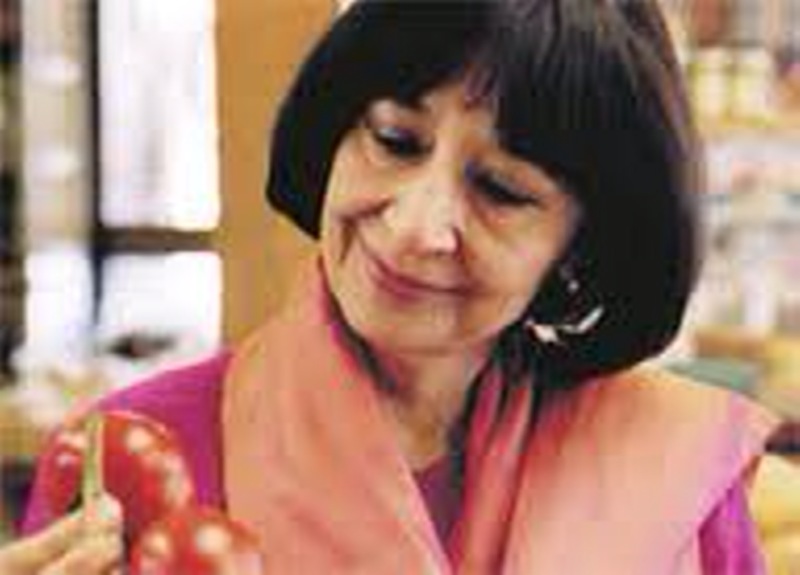Hotel deLuxe Celebrates a Legend with the Elizabeth Taylor Champagne Cocktail
 Wednesday, March 23, 2011 at 3:30PM
Wednesday, March 23, 2011 at 3:30PM  Many of us woke today to the sad news that a great star has passed away. Elizabeth Taylor, a true member of Hollywood’s golden-era royalty, died peacefully of congestive heart failure at the Cedars-Sinai Hospital in Los Angeles, surrounded by her four children. She was 79 years old.
Many of us woke today to the sad news that a great star has passed away. Elizabeth Taylor, a true member of Hollywood’s golden-era royalty, died peacefully of congestive heart failure at the Cedars-Sinai Hospital in Los Angeles, surrounded by her four children. She was 79 years old.
When one speaks of the amazing life of Elizabeth Taylor, only the word “lengendary” will do. And it is this great legacy that the Hotel deLuxe in Portland, Oregon honors every day with a very special cocktail.
But first let’s meet Elizabeth Taylor. She came to Hollywood from war-torn Britain during the early days of World War II and rose to sudden fame as the courageous heroine in the heart-touching film National Velvet.

Her stunning beauty caught the eye of many men, starting with Nicky Hilton of Hilton Hotel fame. Seven other husbands followed and many more great movies including Cleopatra, Who’s Afraid of Virginia Woolf, BUtterfield 8, Cat on a Hot Tin Roof, Giant, Place in the Sun, Taming of the Shrew and A Little Night Music to name only a few.
 Lesser acknowledged is her skill as a business woman and her active support of HIV/AIDS research. She launched the first and most successful celebrity perfume, entitled “Passion”, named after her Love for life.
Lesser acknowledged is her skill as a business woman and her active support of HIV/AIDS research. She launched the first and most successful celebrity perfume, entitled “Passion”, named after her Love for life.
By 1991 her fragrant “Passion” had soared to sales of over $100 million dollars. A later perfume, “White Diamonds” would go on to rack up over one billion dollars in sales globally, making it the most famous star perfume ever marketed.
Elizabeth then gathered her star power (and dollars) and helped found the American Foundation for AIDS Research (amfAR) after the shattering death of her former costar and longtime friend, Rock Hudson. At a time when many wanted to ignore the growing health crisis or worse use the event to isolate and judge a valuable segment of society, she demand that the issue and loss caused by AIDS be faced squarely and publicly.
 Showing the strength behind her beauty, she went further and founded the Elizabeth Taylor Aids Foundation (ETAF), enlisting the aid of the rich and famous to raise funds and fight fear. Indeed, it is to this organization that she asked her many fans and friends to support if they wished to remember her after death.
Showing the strength behind her beauty, she went further and founded the Elizabeth Taylor Aids Foundation (ETAF), enlisting the aid of the rich and famous to raise funds and fight fear. Indeed, it is to this organization that she asked her many fans and friends to support if they wished to remember her after death.
From charm to beauty to meaning – what a life she lived, what a legacy she has left us. Michael Robertson, lead bartender extra ordinaire of the Driftwood Lounge at the cinema–themed Hotel deLuxe, has created a fantastic champagne cocktail that captures the beauty (inside and out) of this amazing superstar.
 An almost perfect color match to Elizabeth Taylor’s stunning violet eyes, this is a cocktail as unforgettable as the star’s beauty and personal courage.
An almost perfect color match to Elizabeth Taylor’s stunning violet eyes, this is a cocktail as unforgettable as the star’s beauty and personal courage.
Equally unforgettable is the Hotel deLuxe with each floor’s décor honoring the Hollywood made famous by the movies. Images of Grace Kelly, Clark Gable, Jean Harlow grace the walls in elegant art deco style. It’s just the right place to enjoy elegance and a world class cocktail honoring a world famous star – Elizabeth Taylor.
But, just in case you can’t make it to the Hotel deLuxe in the near future, bar master Michael Robertson has graciously offered to help you honor Elizabeth Taylor by sharing the recipe for his original cocktail – Enjoy and remember:
 The Elizabeth Taylor Cocktail
The Elizabeth Taylor Cocktail
Stir gently together:
4 ounces of chilled Champagne
¾ ounce of Rothman & Winter’s Crème De Viollete.
Mix slowly and pour into the most elegant glass available.
Gently top with an Amarena Cherry.
Your Culinary World copyright Ana Kinkaid/Peter Schlagel 2011
















































































































































































































